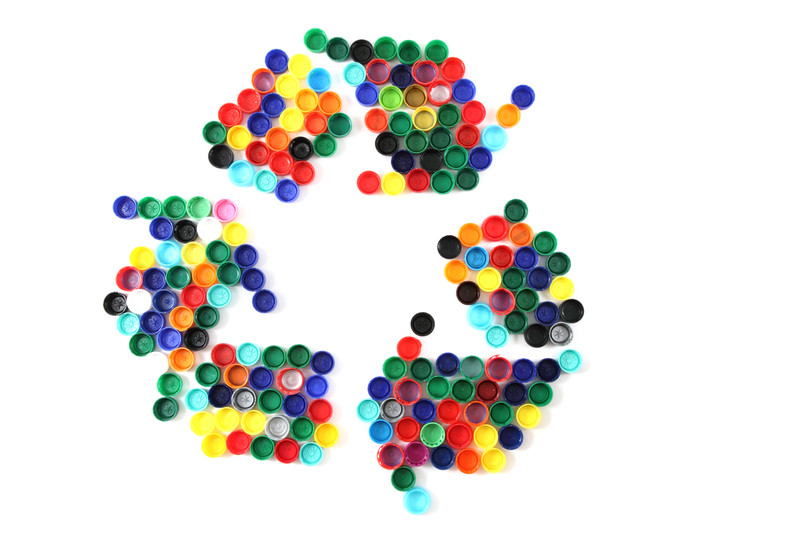A Complete Overview of Disposing PPE Waste Sustainably
The rapid surge in Personal Protective Equipment (PPE) waste, especially after global events like the COVID-19 pandemic, has resulted in severe environmental challenges. This article offers a comprehensive guide to the sustainable disposal of PPE waste. We will delve into various disposal methods, current regulations, innovative recycling techniques, and tips for both individuals and organizations to minimize negative environmental impact.
Understanding PPE Waste and Its Environmental Impact
Personal Protective Equipment includes items like masks, gloves, face shields, gowns, coveralls, and shoe covers. Primarily made from plastics such as polypropylene, polyester, and latex, PPE waste poses a significant disposal challenge, especially since much of it is single-use and potentially contaminated. Unlike regular plastic waste, disposed PPE has stricter handling requirements due to potential biohazards.
What Is PPE Waste?
- Masks - Surgical and N95 masks, often discarded after one use.
- Gloves - Latex, nitrile, and vinyl gloves used in healthcare and other settings.
- Face shields and goggles - Made of hard plastic, sometimes reused but largely single-use during pandemics.
- Gowns and coveralls - Protective clothing, frequently used by frontline workers.
The result? Millions of tons of PPE waste accumulate annually. If disposed of improperly, these plastics and fabrics can take centuries to degrade, releasing microplastics and toxins into landfills, rivers, and oceans.

Sustainable Methods for PPE Waste Disposal
Disposing of PPE waste sustainably requires a structured, responsible approach. Here's an exhaustive look at global best practices:
1. Source Segregation and Proper Collection
- Segregate contaminated PPE from general waste by using clearly labeled bins and color coding (often red for biohazard waste).
- Minimize mixing with recyclable waste streams to avoid contamination and permit specialized treatments.
- Train staff and public on correct disposal protocols.
Separate collection ensures PPE waste is handled safely, minimizing risks of disease transmission and environmental pollution.
2. Safe Disposal Techniques
- High-temperature incineration - Destroying hazardous pathogens but can cause air pollution if not controlled.
- Autoclaving - Steam sterilization to treat infectious PPE before landfilling or further processing.
- Chemical disinfection - Treating PPE with chemicals to render waste safe for landfill.
While incineration has drawbacks, modern pollution-controlled incinerators can cut harmful emissions. However, these traditional methods are not always sustainable, pushing the industry towards innovative recycling and recovery strategies.
3. PPE Waste Recycling and Recovery
- Mechanical recycling - Converting uncontaminated PPE plastics into new products via melting, shredding, or extrusion.
- Chemical recycling - Breaking PPE plastics into base chemicals for reuse in manufacturing.
- Energy recovery - Controlled combustion generates electricity or heat from PPE waste, reducing landfill load.
Recent innovations allow selected PPE components to be upcycled into items such as construction materials, road surfaces, and even furniture, dramatically reducing the ecological footprint.
Challenges in Sustainable PPE Waste Management
Despite new technologies, PPE waste disposal faces several challenges:
- Cross-contamination risk makes recycling difficult unless proper pre-treatment is ensured.
- Material diversity in PPE complicates recycling--combining plastic, metal, and fabric means extra sorting is required.
- High costs for specialized treatment facilities, especially in low-resource regions.
- Poor public awareness leads to improper disposal, clogging sewage and drainage systems with used PPE during pandemics.
Addressing these obstacles requires a holistic approach integrating policy changes, technological advancement, and education.
International Regulations and Guidelines for PPE Disposal
Countries and international agencies have issued robust guidelines on PPE waste management to safeguard both human health and the environment:
World Health Organization (WHO) Recommendations
- Use dedicated containers for PPE waste in hospitals and public places.
- Prioritize non-incineration technologies where feasible to minimize emissions.
- Educate staff and communities on biohazard protocols.
EPA and National Guidelines
- In the United States, the Environmental Protection Agency (EPA) classifies much PPE as regulated medical waste when used in healthcare settings.
- Many European Union countries require color-coded PPE waste bins and advocate for recycling initiatives.
- Asia-Pacific areas often struggle with lack of infrastructure, highlighting the importance of international aid and investment.
Innovative Solutions for Sustainable PPE Disposal
The rise in PPE waste has fostered a surge of innovation. Some standout solutions include:
PPE Materials Innovation
- Biodegradable materials - Scientists are developing masks and gowns from plant-based fibers and biodegradable plastics, which decompose rapidly under natural conditions.
- Reusable PPE - Advanced sterilization allows certain PPE to be cleaned and reused multiple times, reducing single-use waste.
Advanced Recycling Technologies
- Pyrolysis - High-heat, low-oxygen processes convert PPE plastics into fuels or new plastics, minimizing landfill reliance.
- Hydrothermal treatment - Using water and heat to break down PPE into reusable chemicals.
Waste-to-Energy Plants
- Properly filtered waste-to-energy incinerators convert PPE waste into power, with scrubbers to eliminate harmful gases.
Best Practices for Sustainable PPE Waste Disposal
Whether you are an individual, healthcare worker, or manage a corporation, taking proactive steps can significantly curb the environmental impact of PPE waste. Here's how:
For Individuals
- Use reusable masks where safe and possible, washing them regularly per official guidance.
- Dispose of single-use PPE in designated bins, not household or public waste.
- Avoid littering--carry a sealable bag to store used items until you can dispose of them correctly.
For Businesses and Healthcare Facilities
- Set up dedicated color-coded disposal bins for mask and glove waste.
- Partner with licensed medical waste disposal companies with sustainable credentials.
- Invest in staff training and regular audits to ensure proper segregation and handling.
- Explore in-house sterilization and reprocessing of suitable PPE items.
For Government and Policymakers
- Enforce strict regulations and penalties around illegal PPE dumping.
- Fund research and incentives for biodegradable PPE and advanced recycling.
- Drive public awareness campaigns on safe, sustainable PPE waste disposal.
Case Studies: Real-World Approaches to PPE Waste Sustainability
United Kingdom: The PPE Recycling Revolution
The UK's National Health Service (NHS) piloted a scheme to recycle masks and gowns via specialized facilities. By sterilizing and mechanically recycling PPE plastics, they produced building materials used in local construction projects. This has diverted tons of PPE from landfill.
India: Turning PPE Waste into Roads
Indian engineers discovered that shredded PPE materials, when mixed with bitumen, enhance road durability. This innovative process not only safely contains any residual contaminants but also adds value to previously non-recyclable waste.
Canada: Hospital-Led Compostable PPE Trials
Several Canadian hospitals now trial compostable PPE items made from bioplastics and cellulose fibers. Pilot results show substantial reduction in landfill usage and valuable lessons for expanding the approach nationwide.
Environmental and Health Benefits of Sustainable PPE Disposal
Proper PPE waste management isn't just about compliance--it delivers concrete benefits:
- Reduces microplastic pollution in aquatic and terrestrial habitats.
- Decreases spread of disease by ensuring contaminated PPE is neutralized, not left in public spaces.
- Lowers carbon emissions through recycling and energy recovery compared to landfilling or traditional incineration.
- Helps conserve resources by recovering usable materials for new products.

Sustainable PPE Waste Disposal: The Road Ahead
The road to sustainable PPE waste disposal is complex but achievable. It requires a unified effort from all stakeholders:
- Improved product design - Shifting to easier-to-recycle or biodegradable PPE materials.
- Widespread public education - Promoting safe disposal habits worldwide.
- Policy and funding support - Driving innovation and infrastructure upgrades.
- Global cooperation - Sharing successful models and resources across borders.
In summary, adopting sustainable practices for PPE waste disposal is crucial to protect our environment, public health, and the future viability of our waste management systems. Through a blend of technology, regulation, and individual action, we can successfully address the PPE waste crisis and move towards a cleaner, greener world.
Frequently Asked Questions about Sustainable PPE Waste Disposal
Can PPE be recycled?
Yes, selected PPE items can be recycled if uncontaminated and processed in specialized recycling facilities. Contaminated PPE often requires sterilization or energy recovery before recycling. Biodegradable or compostable PPE offers simpler, eco-friendly alternatives.
What are the risks of improper PPE waste disposal?
Improper disposal risks spreading infectious diseases, polluting land and water with persistent plastics, and endangering wildlife and the food chain.
How can organizations ensure sustainability in PPE waste management?
By implementing effective segregation, choosing trusted disposal partners, investing in employee training, and considering reusable or eco-friendly PPE options.
Let's all commit to responsible, sustainable PPE waste disposal--for our health, our communities, and our planet.
